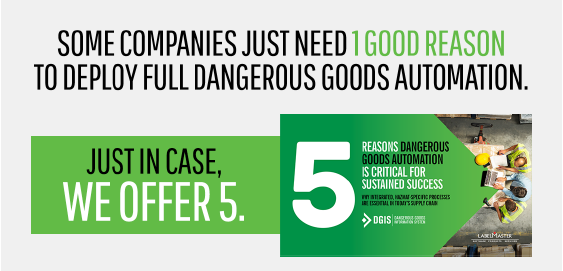

Week of May 30, 2022
Linking supply chain news with dangerous goods compliance
Inflation, surging diesel prices, high shipping costs and more are impacting businesses around the world, including those shipping dangerous goods.
Let’s examine some recent industry news.
SUPPLY CHAIN NEWS
- Five Strategies for Dealing with Rising Supply Chain Costs: In an inflationary market, where constant disruptions are the norm, businesses must get creative to keep their costs in check.
- Inflation ‘is Inseparably Linked to the Supply Chain,’ Former Home Depot CEO says: Inflation appears to be spilling into all parts of the economy, with one primary reason being ongoing supply chain constraints.
- Retailers Seek New Supply Chain Efficiencies to Offset Soaring Diesel: As diesel costs skyrocket, retailers and other transport-reliant businesses have a renewed urgency to double-down on efficiency efforts wherever they can find them.
- Amazon and Walmart Count the Cost of Empty Shelves and Too Many Staff: While most companies in the U.S. struggle to find labor and warehouse capacity, Amazon and Walmart are being hit by an excess of both.
- Supply chain Issues and Costs Unlikely to Return to Pre-Crisis Norm: The global supply chain crisis is a long-term issue that won’t see costs return to pre-crisis levels, according to a new survey of the U.K.’s top 100 retailers.
- Obsession With Cost Puts Supply Chains at Risk: As businesses look to establish more resilient networks to address supply chain bottlenecks, executives must look beyond cost.
OUR PERSPECTIVE
- Noncompliance can be costly. Costs resulting from noncompliance can add up – from fees related to stopped shipments and carrier fines to increased insurance liability following an accident. Small errors in labeling and documentation often result in civil penalties which, if repeated, can add up to significant losses, while other violations carry stiffer penalties – up to $84,485 for certain violations of U.S. hazardous materials transportation.
- Compliance is more than avoiding fines. Better compliance processes not only help avoid fines, but it also helps organizations maintain lean and efficient operations. Access to important master data and regulatory information can help organizations identify cost-effective solutions to ensure they’re not spending more than necessary on packaging or protection of goods, while still maintaining compliance.
- Compliance is more than a cost center. Compliance plays a role in every part of the supply chain and must be considered as businesses make changes to their operations to reduce costs, drive efficiencies, meet customer demands and more. Automating DG shipment compliance and validation can help establish repeatable and reliable processes across the supply chain and drive a positive financial and operational impact.
How has your organization navigated the supply chain challenges over the last year and what areas of your compliance operations need to address moving forward?
We want your input! Please take a few minutes to add your voice to the 7th annual DG Global Confidence Outlook! Your responses are anonymous, and we’ll share the results later this year.
To learn more about Dangerous Goods software or how to establish a safer, more compliant supply chain, visit https://www.labelmaster.com.
Have questions about Dangerous Goods transport? Call the Labelmaster Regulatory Hotline at 1.800.621.5808.
Automation is the key to handling today’s supply chain challenges. But without true Dangerous Goods automation, you may be operating at a competitive disadvantage.
Integrating Labelmaster’s DGIS with your existing TMS, ERP, WMS or OMS platforms puts Dangerous Goods information in the same window as all your other shipping information. Hazmat shipments become as simple as non-regulated shipments—a seamless part of your normal workflows.
Our new eBook explains how integrating DGIS with your existing automation platforms can help your organization sustain success in today’s supply chain.




